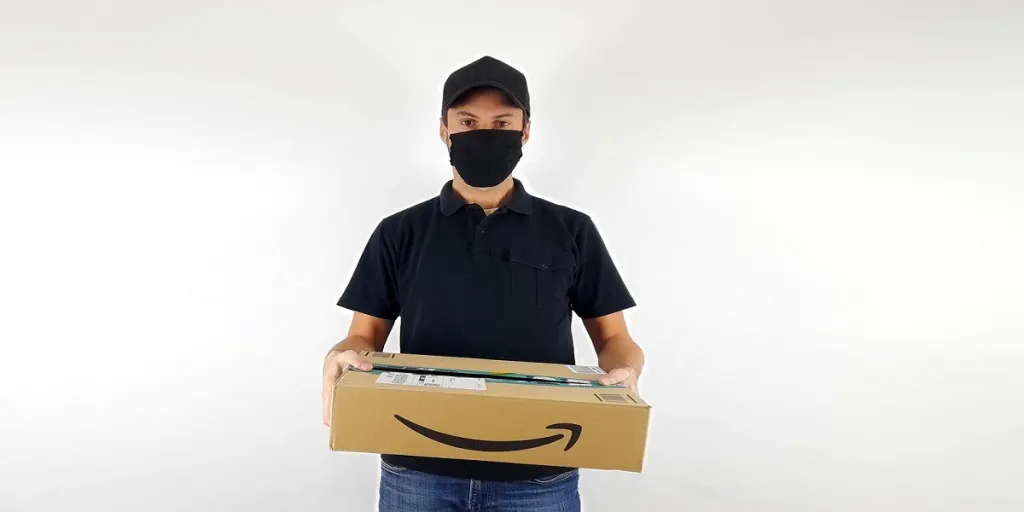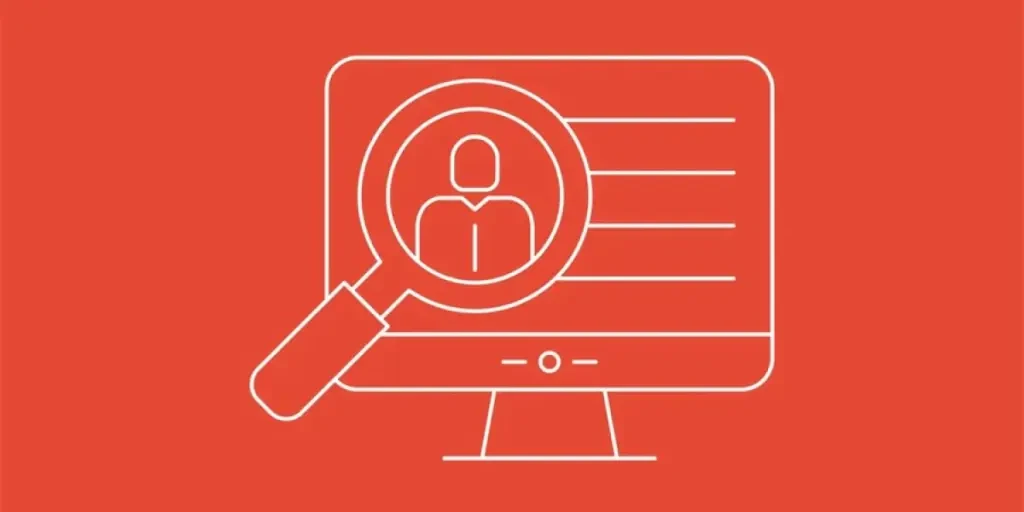There’s no avoiding it: “If you build it, they will come” is a fantasy. To the frustration of creators all over the world, building something is only the beginning; you then need to promote it so your target customers know that it exists.
If you’re selling goods online then one of the most effective methods is ecommerce advertising.
This article will explain what it is, and how to avoid common ecommerce advertising mistakes.
In this post:
What is ecommerce advertising?
Ecommerce advertising strategies
Key takeaways
What is ecommerce advertising?
Ecommerce advertising is the practice of distributing paid ads to promote or sell online. A crucial element of ecommerce marketing, it includes organic search, social media, email, video, and other online channels. Its goal? Increasing brand awareness, driving traffic, and generating engagement and sales.
One of the huge benefits of online advertising for ecommerce is that you can reach specific groups of people who would like your products, and keep in touch with them through multiple platforms.
For example, email marketing is a particularly powerful form of online advertising as customers show clear intent when they sign up to receive emails from your brand. In fact, according to our 2023 H1 Stats report, open rates for promotional email campaigns were 24.08%, a 5% increase from the same time last year.
Smaller brands on tight budgets may struggle to compete directly with larger counterparts. But ample opportunities can be found by strategically leveraging earned media and exploring less-used paid channels.
Ecommerce advertising strategies
Ecommerce advertising strategies are the methods you use to promote your online store and products to potential customers. Some of the most common ecommerce advertising strategies are:
- Social media promotions that raise brand awareness and offer special deals
- Search ads to drive new customer acquisition by targeting relevant keywords and placements
- Retargeting campaigns that follow up website visitors with related product ads
- Omnichannel messaging tailored to customer lifecycle and behaviors
- Affiliate partnerships that allow advertising via influencers and external sites
Effective advertising is achievable across all platforms. However, some ecommerce platforms like Shopify and BigCommerce simplify certain strategies.
For example, integrations with email marketing platforms enable automating targeted messages. These can include emails to customers who abandoned their cart before reaching the ecommerce checkout.
Social media ads
If you’re already a user of social media platforms then you’re already aware of how many companies run ads on them. That may put a little fear into you.
But the beauty of online advertising is its ability to target very specific groups of people. As Hawke Media’s Ashley Scorpio advises in a holiday insights podcast, you can use a mix of platforms to compete. These include the often underrated tools such as TikTok and Pinterest.
For your ecommerce campaigns to be successful on social media, it’s important to respect the context of each platform. Each one can be effective at raising awareness and generating traffic if managed with consideration:
- Snapchat and TikTok are great for creating short, engaging, and viral videos that showcase and advertise your products in a fun and creative way. Use filters, stickers, music, and challenges to attract and entertain your audience.
- You can make money on Instagram by showing users how your products fit in with their lifestyles. Utilize its visual focus and store features like reels and hashtags to sell your products directly from your posts and stories.
- Facebook also has native store features, and an effective ecommerce advertising strategy is to share your products, customer reviews, and user-generated content of real people using or wearing your products.
As these people probably don’t know who you are yet, the key is to focus on creating compelling ads that grab their attention and pique their interest.
There’s a low barrier to entry for running social ads, but if you really want to maximize your online store advertising then you’ll be pleased to know it’s possible to get very specific in the settings. If you want to reach recently-engaged women aged between 35-45 who run their own business, you can do that. Selling to people who live in a specific zip code and like The Beatles? You can do that too.
Social media platforms give a range of audience refinement settings, including:
- Location (country, state, city)
- Languages
- The industry they work in
- Interests
The more you drill down, the more appealing you’ll be to the audience, which can boost your campaign performance and ROI. Below is an example of how you can define your audience on Facebook.
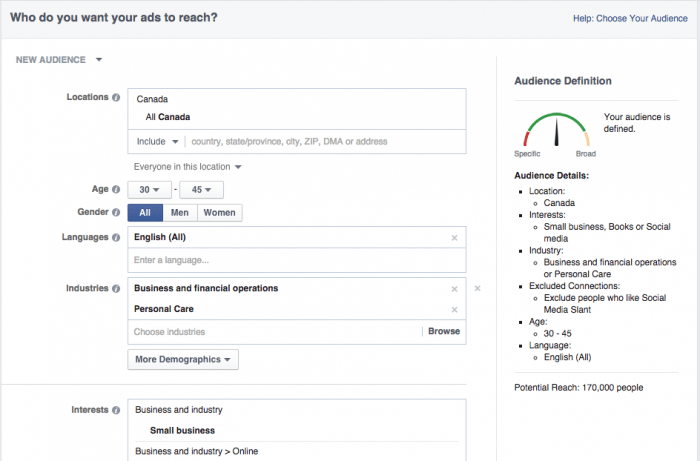
One of the most beneficial features of social media advertising is the ability to create lookalike audiences. This is where you tell Facebook who your most profitable customers are, and its algorithm finds people with the qualities they all share. Alternatively, you can create a custom audience by uploading a spreadsheet of email addresses and showing those people your ads—because they already know your business, custom audiences can have higher conversion rates.
If you install the Facebook Pixel onto your site (you should), you unlock a range of even more impressive retargeting features: send ads only to people who have already been on your site, or visited specific product pages, or completed a purchase within a certain time frame.
Google Ads
Google Ads can be an effective strategy for advertising in ecommerce. With pay-per-click advertising, your text, image, or shopping-style ads show up alongside search results for the product keywords and phrases you target.
The benefit of social promotions is that searchers have already shown purchase intent by hunting for items you sell. Your ecommerce ads appear when they use relevant keywords, and you only pay when they click.
Here are some best practices for PPC advertising:
- Make your ads clear and concise, and show what you’re selling and why it’s valuable
- Use keywords that match the user’s intent and the landing page content
- Test different ad variations and optimize for performance
- Track your results and adjust your ecommerce ads strategy accordingly
Google Ads and Google Shopping Ads, which include visuals, are some of the best ads for ecommerce. When they deliver on what the searcher wants, they can readily convert them from an ad click to a customer.
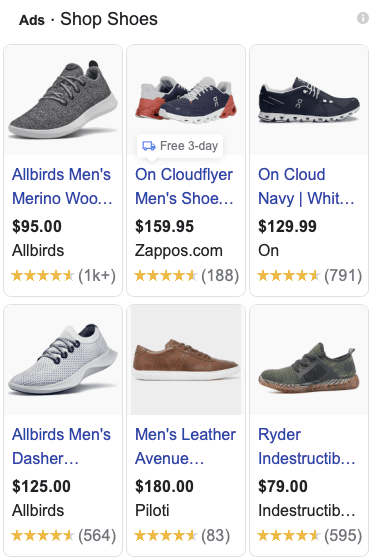
Retargeting
Imagine walking into a store, finding something you liked but you weren’t quite ready to buy, and after you leave, the shop assistant follows you out. They give you more information on the item you were looking at, remind you about the store, and perhaps give you a discount.
That’s unlikely to happen, yet it’s precisely what retargeting is.
People leaving online stores before purchasing is another of the main ecommerce advertising challenges, and it’s a big one: 98% of visitors leave a website without purchase or action. Almost half of all sales by ecommerce businesses take more than a day to complete, and three-quarters of visitors who abandon their cart want to come back later. Unfortunately, not all of them can remember the website later.
Email retargeting helps to overcome this, and as a result, it can boost ecommerce sales.
Retargeting is a powerful option because it’s flexible. You can gently remind people about your business, ask them to do something specific, offer a coupon, and so much more. The following example shows an automated sequence that starts 15 minutes after a site visitor abandons their cart. It reminds them there are items in their cart, and sends another reminder 12 hours later. After 24 hours, that person is added to a Facebook custom audience, so Facebook can show retargeting ads to people with similar characteristics.
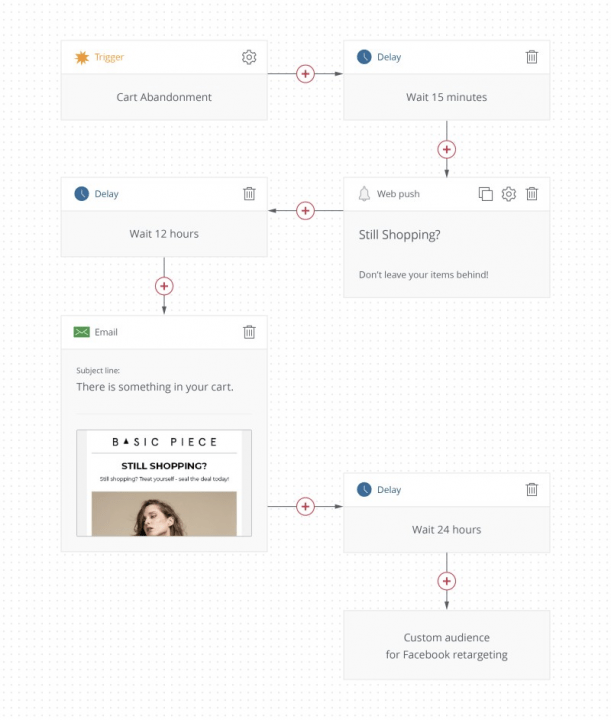
To get the most out of your email retargeting, it’s important to test different subject lines to see which ones people are most likely to open. Do they respond to urgency, curiosity, or time-limited offers? You can also experiment with the best time to send them, and what messaging works best to encourage people to complete the purchase.
Retargeting isn’t only for people who leave your online store before purchasing—it’s also used to send post-purchase emails and to keep in touch with past buyers. For example, you can show customers their favorite items in different colors, or product recommendations you think they’d like based on past purchases.
A key strength of email retargeting is its flexibility: it can be used to help a new customer complete their first purchase, and increase the lifetime value of existing customers.
Omnichannel marketing
To make retargeting even more powerful, you can progress to omnichannel marketing. This uses multiple channels in such a way that it creates a unified experience for your customers.
This reflects how customers behave when browsing and shopping online: we don’t only use emails, or only use Facebook, or only use SMS. We use all of them, perhaps for different things or at different points in the day. By having an omnichannel marketing approach, you can be present for your customer however they come to you. When they interact with one channel, the others update based on their behavior.
Some ecommerce advertising examples with an omnichannel marketing strategy include:
- Sequence messages based on customer behaviors. If they purchase after an abandoned cart SMS, send a post-purchase email next rather than repeating the same promo.
- Retarget recent site visitors through ads on Facebook, Instagram feed, or stories. Use these opportunities to remind them of their cart contents.
- Use video ads to showcase the benefits and features of your products. Direct customers to a landing page where they can learn more or buy.
- Leverage multiple advertising techniques tailored for each channel. Segment customers for coordinated and maximum impact.
Not only does the omnichannel approach give you more touchpoints with the customer, it also doesn’t feel like advertising at all. Even the staunchest anti-ad customers won’t mind an ad if it’s perfectly relevant to them, and omnichannel marketing helps achieve that relevancy.
Content marketing
Content marketing has developed a fearsome reputation over the years, and for good reason. It can bring people to your site, answer their questions, build trust, and lead them to become email subscribers or paying customers—not bad for a single tactic!
“Content” is an umbrella term including written, audio, and video materials via blogs, product pages, podcasts, YouTube videos, social media stories, and so on.
Some tips that can come in handy when marketing content include:
- Tailor blog content to goals—informational posts to attract subscribers, promotional to drive sales
- Optimize product pages with relevant keywords, alt text, and meta descriptions for discovery
- Guest post on industry websites for exposure and credibility-boosting backlinks
- Use podcasts and video email marketing to boost engagement and brand recall
- Repurpose tutorials, brand stories into engaging video and podcast formats
- Post how-tos, demos, reviews, and teasers on YouTube and share across social media
Quality, consistency, and an understanding of each platform’s audience will drive results.
Influencer and affiliate marketing
For the same reasons that we’re likely to trust the recommendations of our friends and family, word-of-mouth is a potent form of marketing. In fact, 79% of people trust online reviews as much as recommendations from friends and family, and 94% are more likely to use a business if it has positive reviews.
Unlike traditional celebrity endorsements, influencer marketing allows you to target a specific niche of potential customers.
Let’s say you run an ecommerce business that sells clothing. You can partner with influencers with fashion-oriented audiences and showcase your items on their social media platforms.

Some practical influencer marketing tips include:
- Gift products for influencers to feature in relevant social content. These include unboxing, wearing outfits, and product reviews.
- Sponsor influencer posts and stories. Have nano or macro influencers create dedicated feeds promoting your items.
- Invite influencers to attend or host brand-related events. Or, to photoshoot gifts for user-generated social content.
- Encourage influencer promo codes for followers. These can drive purchases from their highly engaged audiences.
- Compensate through free products and affiliate sales commissions. Consider paying per post/story based on follower count and typical engagement.
- Sponsor contests or giveaways. Require participants to follow your and the influencer’s accounts and tag their friends.
Affiliate marketing is another avenue for raising awareness and making sales through somebody else’s audience. Affiliates earn a commission for each customer that they refer who then buys a product, so are incentivized to generate more sales because that increases their income.
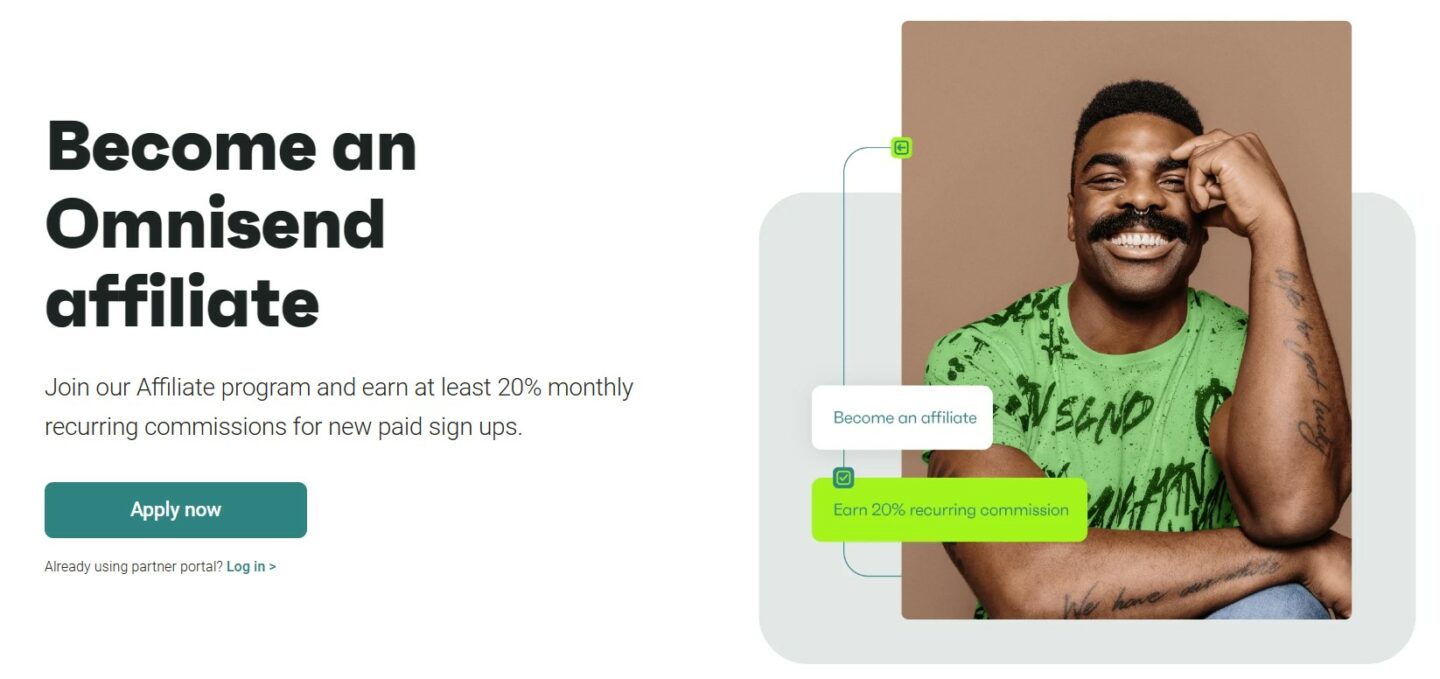
Creating an affiliate program for your ecommerce store can be beneficial. You get other people actively working to acquire new customers and drive sales—and of course, once they become buyers, they enter your sales funnel. Here, you can use omnichannel and retargeting techniques to maintain contact with them.
Key takeaways
Growing your online store with ecommerce campaigns enables you to acquire new customers, increase the number of completed purchases in your store, and keep in touch with those customers to drive revenue even further.
There are various strategies that can be incorporated into an ecommerce advertising strategy, and omnichannel marketing puts the customer at the heart of the campaign by utilizing multiple touchpoints to update them.
Getting started with omnichannel couldn’t be any easier. In fact, you can use a single tool to follow-up with customers via email, SMS, and social media, and get started with pre-built workflows.
Source from Omnisend
Disclaimer: The information set forth above is provided by omnisend.com independently of Alibaba.com. Alibaba.com makes no representation and warranties as to the quality and reliability of the seller and products.




